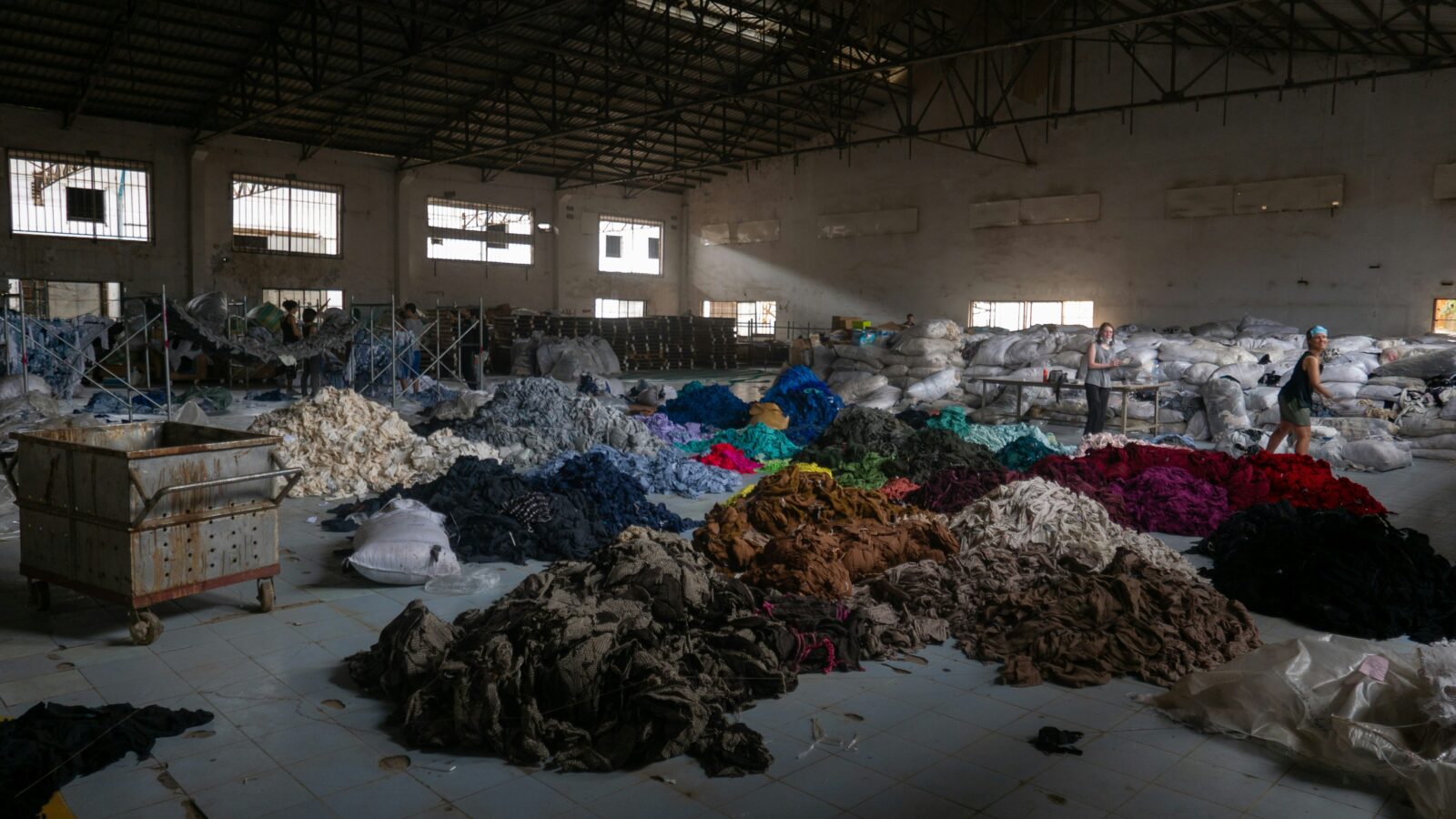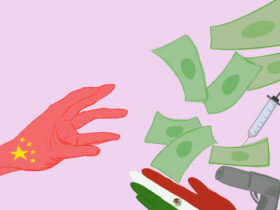Imagine someone going to the beach and stepping into the water as the waves crash onto the shore. Except instead of seaweed brushing past their feet, it’s clothes. Thousands of clothes. Everything from t-shirts to socks, pants and dresses. Lining the shore behind them are piles of discarded clothes and waste. The beach has become a mountain range made out of clothing, and a peaceful walk along the beach is nearly impossible.
Ghana, located on the coast of west Africa, is the number one importer of second-hand clothing in the world. This is partially due to the size of their second-hand clothing markets and the power dynamic that exists between global superpowers and Ghana. Weekly, the country imports around 15 million second-hand clothing items, and in 2021, imported $214 million worth of used clothes. Locally, the used clothing has become known as obroni wawu, which translates to “dead white man’s clothes.”
In Accra, Ghana’s capital, used clothing can be found in ditches, lining beaches and in the ocean off the coast. Accra is home to Kantamanto, one of the world’s largest second-hand clothing markets. Most items circulating the market are donated clothes from the U.S., United Kingdom and China. Individuals give their clothing to charity and second-hand organizations, who only sell up to 20% of the donated clothing. The rest go through a process of sales, each party buying up what they can reuse or resell. Finally, the last buyer is usually left with the bottom of the barrel; these merchants at the end of the chain often work in second hand clothing markets like Kantamanto. These individuals buy clothing by the bale, not knowing what is inside, hoping that they can sell it and make a profit. Essentially, after an item is donated, it is sold to exporters and importers who sell it to vendors in markets like Kantamanto.
With the increased popularity surrounding fast fashion, individuals are throwing away and donating clothes at a much higher rate. In fact, textile waste has increased 811% since 1960. The present world produces 92 million tons of textile waste each year and up to 100 billion new garments are made each year. Shein, H&M and Zara are some examples of the most popular fast fashion brands that are causing some of the most harm on the planet. As a result, while the number of clothes coming into markets has increased, the clothes’ overall quality has dropped significantly. Reports indicate more and more clothes are ripping at the seams, have bloodstains, broken zippers or other characteristics making them virtually unwearable. The amount of clothing coming in is not necessarily the main issue, it is the clothing’s poor quality that is causing the growth of waste in Ghana.
It is estimated around 30,000 people depend on Ghana’s clothing market for their livelihoods. Before the rise of fast fashion, vendors remember being able to sell all the clothing that would come in a single bale. However, 40% of the clothing imported into Kantamanto now leaves as waste, whether through legal waste management channels or illegal dumping in ditches, streams and informal landfills.
What Kantamano’ story illustrates is that donating and repurposing second-hand clothing seems beneficial on the surface; it benefits communities who can reuse the clothing, provides jobs to 30,000 individuals and has a positive economic impact. However, the fast fashion industry has turned a positive practice into a pollution problem. Individuals purchase clothing from fast fashion brands, wear the item maybe two or three times and donate it just when it starts to fall to pieces. The immense amount of waste has caused Ghana to become fast fashion’s personal trash bin. As the waste continues to pile up across Ghana, more and more communities are being impacted.
The community of Accra is substantially impacted in all areas of life. Two miles from the Kantamanto market lies the community of Old Faduma. What once used to be a dynamic and thriving community has become one of the most notorious illegal dumping destinations for clothing waste from Kantamanto. With a population of around 80,000 people, many homes are built atop layers of waste.
The surrounding environment is also suffering. Korle Lagoon in Accra was once a body of water where people enjoyed fishing and swimming but is now one of the most polluted bodies of water worldwide. The water has turned black, the shores are lined with litter and the air is hazy with smoke from burning waste. This pollution is particularly damaging because the end of the lagoon feeds into the Atlantic Ocean, where most of the clothing ends up piled on the beach and even entering the sea. Textile waste takes around 200 years to decompose, so when the clothes make their way into the ocean, they are destroying marine life as well as the livelihoods of fishermen. It has become near impossible to walk on the beach without stepping on mounds of clothing. Fishermen catch more clothes in their nets than fish and the waste has only kept accumulating.
Organizations like the Or Foundation, a sustainable fashion advocacy group, have been working with traders in Kantamanto to promote methods for recycling and repurposing discarded clothes. For example, it’s been proposed that traders could shred the waste clothing and sell it as insulation instead of throwing it away. Additionally, South African countries have adopted policies that limit the amount of clothing that can be imported. The government of Ghana could create policies to regulate the importation of used goods by requiring importers to obtain permits, which would allow Ghana to control the goods that enter the country. In turn, it creates a ban on importation of waste, unwanted, and low-quality goods.
However, no matter how many sustainable practices the traders in Ghana adopt or polices the government implements, the weight and speed of the textile market is too much to bear in the long run. Accra’s beaches and bodies of water will never be clear of waste until exporting countries encourage brands not to produce clothing in excess. Ghana is not the only country dealing with the aftermath of fast fashion’s disregarded clothing; places such as Kenya, Angola, Tunisia, Tanzania and Uganda have all in recent years had to contend with the repercussions of fashion companies’ unsustainable practices. It is time for fast fashion companies to take responsibility for the pollution they cause around the world and there are several policies that could help increase accountability in the fast fashion industry. One example would be creating taxation schemes that put the burden on brands to pay for the waste they create. Brands should give the money raised from the taxes to importer countries to aid with waste management and cleanup projects.
The second-hand clothing industry is, at its core, a business. It’s not a form of recycling, or waste management; it is a supply chain. It is a complicated system that involves charities, commercial waste collectors, sorters, exporters, importers, wholesalers and market traders. Individuals rely on this supply chain for their employment and livelihood, and they are not at fault for the increased amount of textile waste.
Giving clothes to countries that can use them is not intentionally harmful. However, if someone donates a t-shirt that is falling apart at the seams to an importer country like Ghana, is it truly helping the community, or are they using it as their personal dumping ground?







